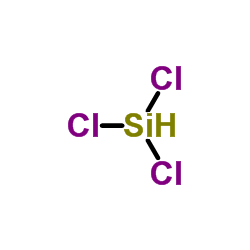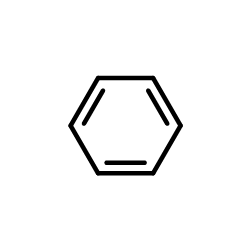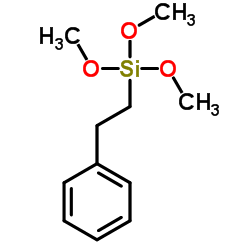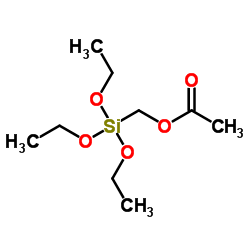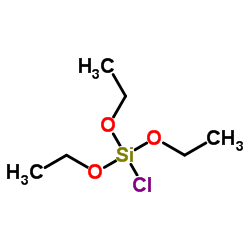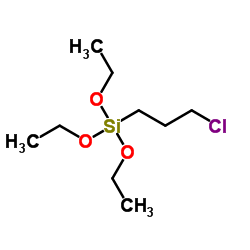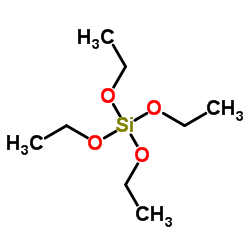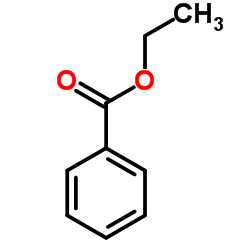998-30-1
| Name | Triethoxysilane |
|---|---|
| Synonyms |
MFCD00009061
5,6-epoxyhexyltriethoxysilane EINECS 213-650-7 triethoxy-silane Silane,triethoxy Triethoxysilicane triethoxy-silan Silane, triethoxy- Triethoxysilane 3-piperazinopropyltriethoxysilane 4-bromooctafluorobutanetriethoxysilane TRIES CT2500 |
| Density | 0.89 g/mL at 25 °C(lit.) |
|---|---|
| Boiling Point | 133.5±0.0 °C at 760 mmHg |
| Melting Point | -170°C |
| Molecular Formula | C6H16O3Si |
| Molecular Weight | 164.275 |
| Flash Point | 29.2±18.7 °C |
| Exact Mass | 164.086868 |
| PSA | 27.69000 |
| LogP | 4.70 |
| Vapour Pressure | 10.4±0.2 mmHg at 25°C |
| Index of Refraction | n20/D 1.377(lit.) |
| Storage condition | Store at 0-5°C |
| Stability | Stable, but moisture sensitive. Flammable. Incompatible with strong oxidizing agents, strong acids, strong bases. |
|
Triethoxysilane
Revision number: 6
SAFETY DATA SHEET Section1. IDENTIFICATION Product name:Triethoxysilane Revision number:6 Section2. HAZARDS IDENTIFICATION GHS classification PHYSICAL HAZARDS Flammable liquidsCategory 3 HEALTH HAZARDS Acute toxicity (Inhalation)Category 1 Skin corrosion/irritationCategory 1B Serious eye damage/eye irritationCategory 1 ENVIRONMENTAL HAZARDSNot classified GHS label elements, including precautionary statements Pictograms or hazard symbols Signal wordDanger Hazard statementsFlammable liquid and vapour Fatal if inhaled Causes severe skin burns and eye damage Precautionary statements: [Prevention]Keep away from heat/sparks/open flames/hot surfaces. - No smoking. Keep container tightly closed. Use explosion-proof electrical/ventilating/lighting equipment. Take precautionary measures against ignition by the static discharge and the spark. Do not breathe dust/fume/gas/mist/vapours/spray. Use only outdoors or in a well-ventilated area. Wash hands thoroughly after handling. Wear respiratory protection. Wear protective gloves/eye protection/face protection. [Response]IF INHALED: Remove victim to fresh air and keep at rest in a position comfortable for breathing. Immediately call a POISON CENTER or doctor/physician. IF SWALLOWED: Rinse mouth. Do NOT induce vomiting. IF IN EYES: Rinse cautiously with water for several minutes. Remove contact lenses, if present and easy to do. Continue rinsing. IF ON SKIN (or hair): Remove/Take off immediately all contaminated clothing. Rinse skin with water/shower. Wash contaminated clothing before reuse. Immediately call a POISON CENTER or doctor/physician. Triethoxysilane Section2. HAZARDS IDENTIFICATION [Storage]Store in a well-ventilated place. Keep container tightly closed. Store locked up. [Disposal]Dispose of contents/container through a waste management company authorized by the local government. Section3. COMPOSITION/INFORMATION ON INGREDIENTS Substance/mixture:Substance Components:Triethoxysilane Percent:>97.0%(GC) CAS Number:998-30-1 Chemical Formula:C6H16O3Si Section4. FIRST AID MEASURES Inhalation:Remove victim to fresh air and keep at rest in a position comfortable for breathing. Immediately call a POISON CENTER or doctor/physician. Skin contact:Remove/Take off immediately all contaminated clothing. Gently wash with plenty of soap and water. Immediately call a POISON CENTER or doctor/physician. Eye contact:Rinse cautiously with water for several minutes. Remove contact lenses, if present and easy to do. Continue rinsing.Immediately call a POISON CENTER or doctor/physician. Ingestion:Immediately call a POISON CENTER or doctor/physician. Rinse mouth. Do NOT induce vomiting. Most importantCough, Sore throat, Redness, Pain symptoms/effects, acute and delayed: Protection of first-aiders:A rescuer should wear personal protective equipment, such as rubber gloves and air-tight goggles. Section5. FIRE-FIGHTING MEASURES Suitable extinguishingDry chemical, foam, carbon dioxide. media: Unsuitable extinguishing Water (It may scatter and spread fire.) media: Specific hazards arising Take care as it may decompose upon combustion or in high temperatures to from the chemical:generate poisonous fume. Precautions for firefighters: Fire-extinguishing work is done from the windward and the suitable fire-extinguishing method according to the surrounding situation is used. Uninvolved persons should evacuate to a safe place. In case of fire in the surroundings: Keep containers cool by spraying with water. Eliminate all ignition sources if safe to do so. Special protectiveWhen extinguishing fire, be sure to wear personal protective equipment. equipment for firefighters: Section6. ACCIDENTAL RELEASE MEASURES Personal precautions,Use extra personal protective equipment (self-contained breathing apparatus). Keep protective equipment and people away from and upwind of spill/leak. Ensure adequate ventilation. Entry to emergency procedures: non-involved personnel should be controlled around the leakage area by roping off, etc. Environmental precautions: Prevent product from entering drains. Methods and materials for Absorb spilled material in dry sand or inert absorbent before recovering it into an containment and cleaning airtight container. In case of large amount of spillage, contain a spill by bunding. up: Adhered or collected material should be promptly disposed of, in accordance with appropriate laws and regulations. Prevention of secondary Remove all sources of ignition. Fire-extinguishing devices should be prepared in case hazards:of a fire. Use spark-proof tools and explosion-proof equipment. Section7. HANDLING AND STORAGE Precautions for safe handling Triethoxysilane Section7. HANDLING AND STORAGE Technical measures:Handling is performed in a well ventilated place. Wear suitable protective equipment. Prevent generation of vapour or mist. Keep away from heat/sparks/open flame/hot surfaces. -No smoking. Take measures to prevent the build up of electrostatic charge. Use explosion-proof equipment. Wash hands and face thoroughly after handling. Use a closed system if possible. Use a ventilation, local exhaust if vapour or aerosol will be generated. Advice on safe handling: Avoid contact with skin, eyes and clothing. May develop pressure. Open carefully. Conditions for safe storage, including any incompatibilities Storage conditions:Keep container tightly closed. Store in a cool, dark and well-ventilated place. Store under inert gas. Protect from moisture. Store locked up. Store away from incompatible materials such as oxidizing agents. Moisture-sensitive Packaging material:Comply with laws. Section8. EXPOSURE CONTROLS / PERSONAL PROTECTION Engineering controls:Install a closed system or local exhaust. Also install safety shower and eye bath. Personal protective equipment Respiratory protection: Half or full facepiece respirator, self-contained breathing apparatus(SCBA), supplied air respirator, etc. Use respirators approved under appropriate government standards and follow local and national regulations. Hand protection:Impervious gloves. Eye protection:Safety goggles. A face-shield, if the situation requires. Skin and body protection: Impervious protective clothing. Protective boots, if the situation requires. Section9. PHYSICAL AND CHEMICAL PROPERTIES Physical state (20°C):Liquid Form:Clear Colorless - Almost colorless Colour: Odour:No data available pH: No data available Melting point/freezing point: No data available Boiling point/range:134°C Flash point:29°C Flammability or explosive limits: Lower:1.2% Upper:No data available Vapour density:5.7 0.90 Relative density: Solubility(ies): [Water]No data available [Other solvents]No data available Section10. STABILITY AND REACTIVITY Chemical stability:Stable under proper conditions. Possibility of hazardous Disproportionation can occur in the presence of bases to produce pyrophoric silanes reactions:occasionally. Conditions to avoid:Spark, Open flame, Static discharge Incompatible materials: Oxidizing agents, Acids, Bases, Water, Metals Hazardous decomposition Carbon monoxide, Carbon dioxide, Silicon oxides products: Triethoxysilane Section11. TOXICOLOGICAL INFORMATION ihl-mus LC50:500 mg/m3/2H Acute Toxicity: ihl-rat LC50:500 mg/m3/2H ivn-mus LD50:180 mg/kg Skin corrosion/irritation: No data available Serious eyeNo data available damage/irritation: Germ cell mutagenicity: No data available Carcinogenicity: IARC =No data available NTP =No data available Reproductive toxicity:No data available VV6682000 RTECS Number: Section12. ECOLOGICAL INFORMATION Ecotoxicity: Fish:No data available Crustacea:No data available Algae:No data available Persistence / degradability: No data available BioaccumulativeNo data available potential(BCF): Mobility in soil Log Pow:No data available Soil adsorption (Koc): No data available Henry's LawNo data available constant(PaM3/mol): Section13. DISPOSAL CONSIDERATIONS Recycle to process, if possible. Consult your local regional authorities. You may be able to burn in a chemical incinerator equipped with an afterburner and scrubber system. Observe all federal, state and local regulations when disposing of the substance. Section14. TRANSPORT INFORMATION Hazards Class:6.1: Toxic substance. Subsidiary risk:3/8: Flammable liquid/Corrosive. UN-No:3489 Proper shipping name:Toxic by inhalation liquid, flammable, corrosive, n.o.s. Section15. REGULATORY INFORMATION Safe management ordinance of dangerous chemical product (State Council announces on January 26, 2002 and revised on February 16,2011): Safe use and production, the storage of a dangerous chemical, transport, loading and unloading were prescribed. Triethoxysilane SECTION 16 - ADDITIONAL INFORMATION N/A |
CHEMICAL IDENTIFICATION
HEALTH HAZARD DATAACUTE TOXICITY DATA
|
| Symbol |



GHS02, GHS05, GHS06 |
|---|---|
| Signal Word | Danger |
| Hazard Statements | H226-H314-H330 |
| Precautionary Statements | P260-P280-P284-P305 + P351 + P338-P310 |
| Personal Protective Equipment | Faceshields;full-face respirator (US);Gloves;Goggles;multi-purpose combination respirator cartridge (US);type ABEK (EN14387) respirator filter |
| Hazard Codes | T:Toxic;C:Corrosive; |
| Risk Phrases | R10;R23/24/25;R34 |
| Safety Phrases | S26-S28-S36/37/39-S45 |
| RIDADR | UN 3384 6.1/PG 1 |
| WGK Germany | 3 |
| RTECS | VV6682000 |
| Packaging Group | II |
| Hazard Class | 6.1 |
| Precursor 9 | |
|---|---|
| DownStream 9 | |




